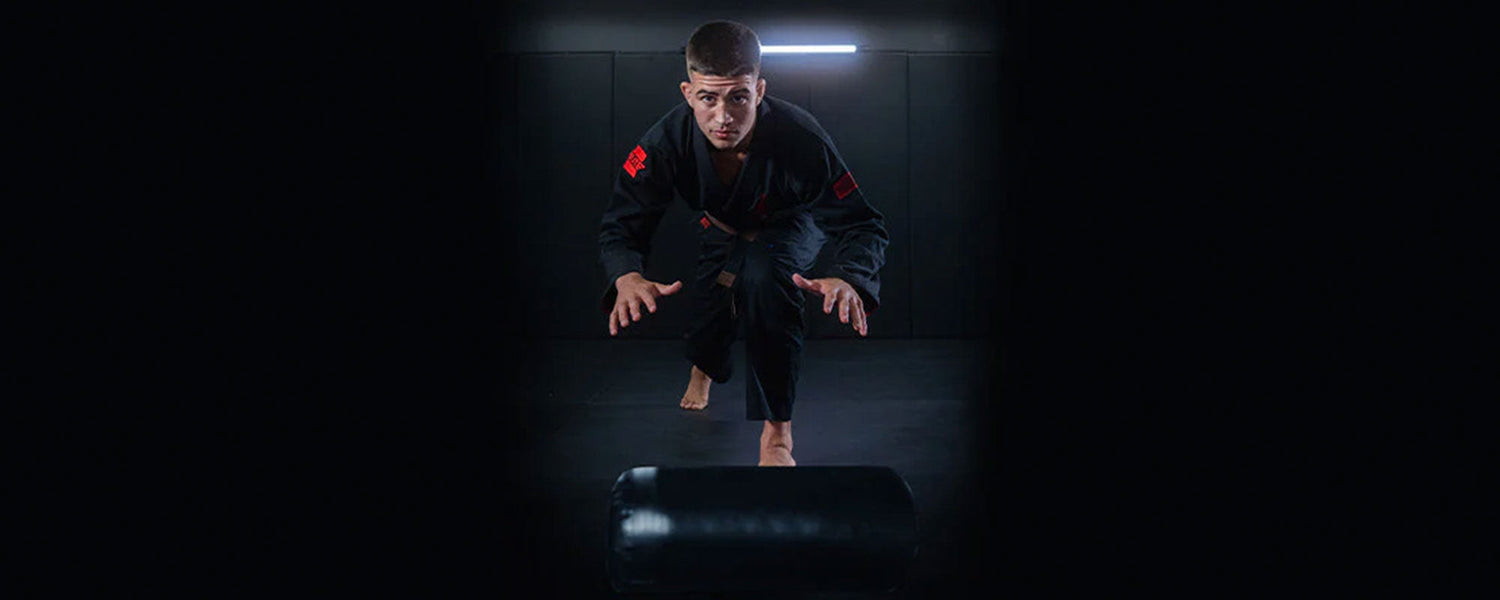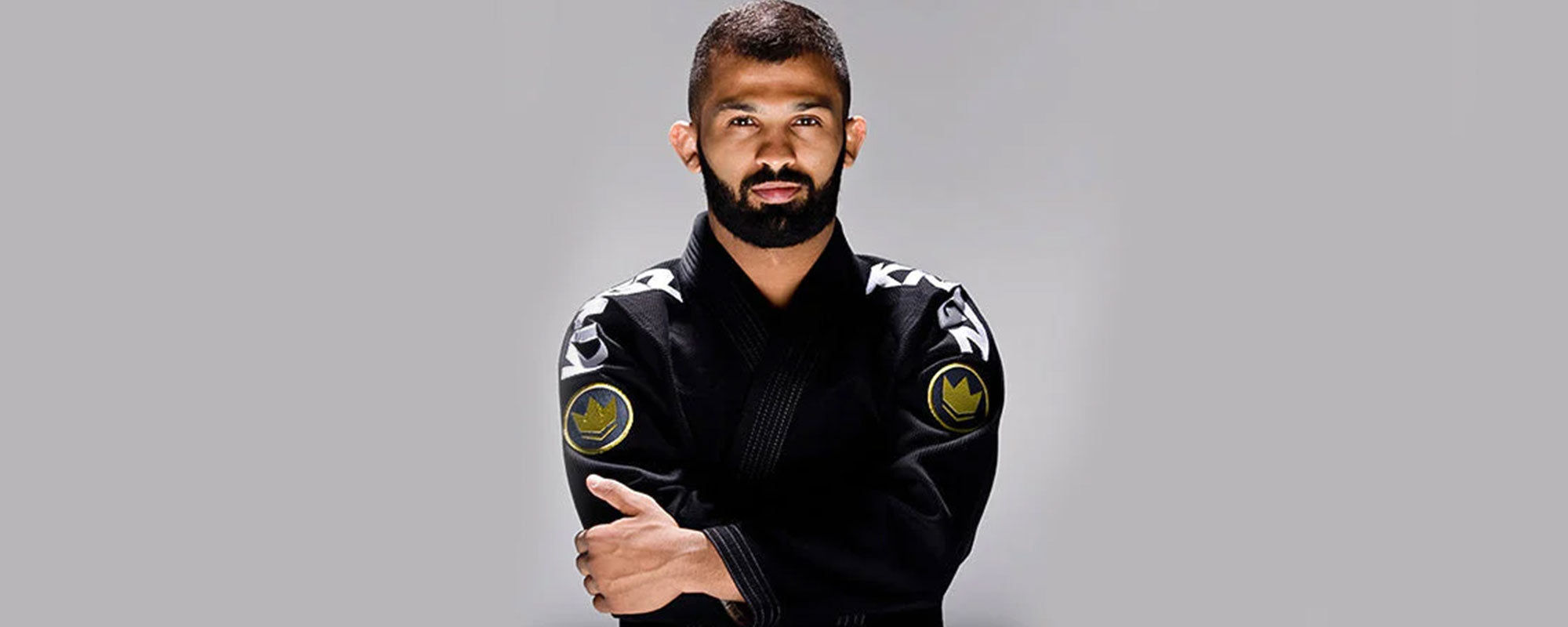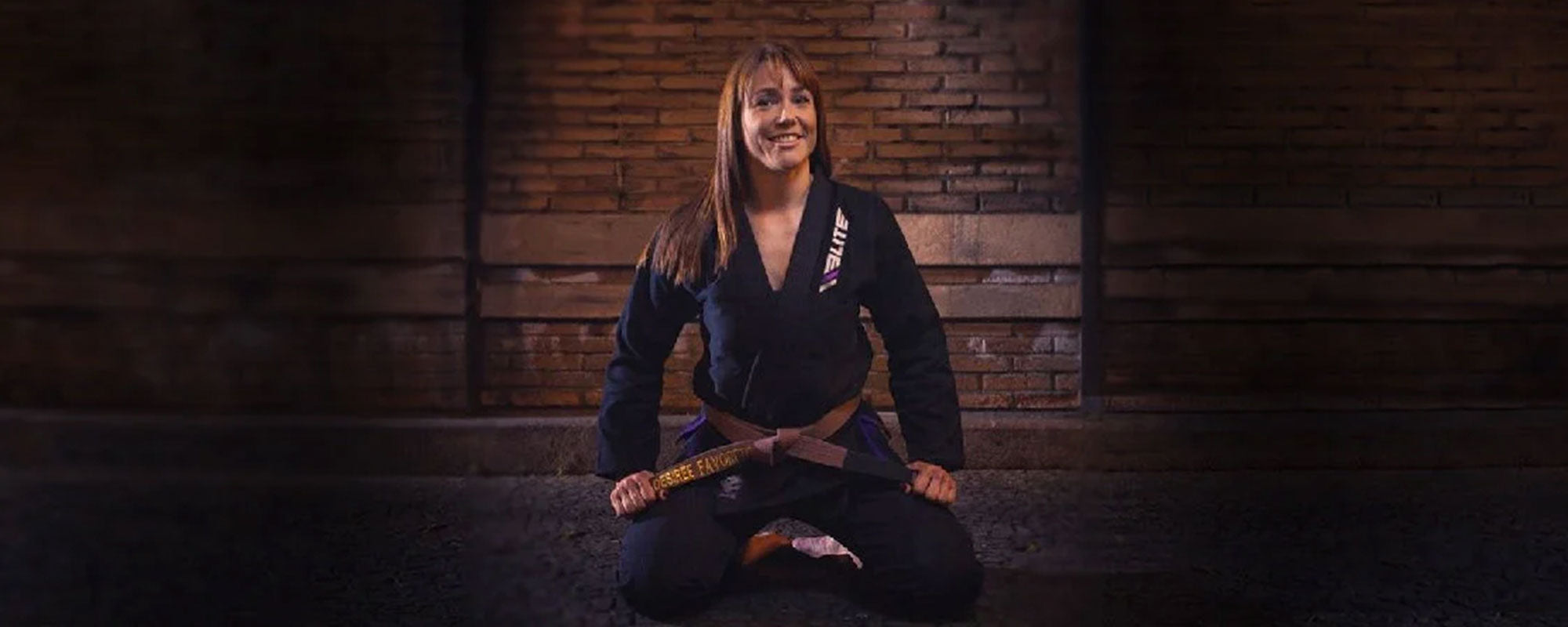Table of content
BJJ heavy bag drills are required when your sparring partner is not available for some days or you are on a trip and don't have access to a BJJ gym or due to a heavy workload. In these situations, BJJ heavy bag drills are the best option to train your BJJ gross motor movements for smooth execution in BJJ tournaments.
These drills are equally beneficial for BJJ white belt fighters to help them improve their Jiu-Jitsu game.
1. Best BJJ Heavy Bag Drills
Following are some of the best BJJ heavy bag drills to practice at home.
1.1. The Knee On Belly
With the knee on belly or knee mount spin movement, you can learn to apply maximum pressure on the opponent so that you remain on top of your opponent. The most promising aspect of this drill is versatility. This workout helps you to correctly spin to stay at the top in different angles and positions. Follow the link below to learn about BJJ heavy bag drilling.
To perform this technique take your trailing leg and step over his head but not too far that you lose balance. Your trailing leg has almost no weight. If you take your leg far you cannot go for a knee mount on the other side.
The proper distance allows accurate pivot on the ball which transits into a new knee mounting leg.
After that exert force to fight and pin. It depends upon you at what place you pin your opponent. It might be a shoulder, chest, or hip pin. That's the knee mount drilling.
The knee-on-belly movement is the fundamental movement for a lot of advanced spins.
Advantage
- The knee on belly position creates submission opportunities.
- It tires out your opponent
- It is easier to drag and hold the opponent through the lapel, pants, and belt.
1.2. The Low Spin
The low spin is the most winning technique of the brown and black belt BJJ fighters. The fighter aims to grab the opponent from the back to apply some wicked techniques to force the opponent to submit. The low spin is also known as step-over spin.
The goal of this drill is to teleport your body from being in front of the guy to behind him. Meanwhile, your opponent will try to stop you from going on the back. He or she may try to underhook you or turn their turret with all the weapons.
Place your hands and knees on the floor. Your right knee may knock the left knee. Step over and drop the right knee on the ground.
Do not let your opponent turn your face towards you. Just exert force on the shoulder and go for Ezekiel choke.
And if your opponent turns towards you stop and take transition to the previous position from where you took a spin. Now, it is the ideal position for the practitioner to hold opponents back and play a guard now.
Advantage
- Easy application of guard
- Force the opponent for submission through an ezekiel choke.
1.3. Guard Pass Drill
Guard Pass drilling involves some specific leg and footwork movement for the effective application of the technique. The most popular pattern in guard pass drilling is a two-step movement. The basic idea is to move from the front of your opponent to control him for a knee mount.
Suppose you want to mount your opponent from your left then move your right step first and the left to effectively control your opponent. Thus, this drilling requires enough practice with BJJ heavy bags to make it muscle memory.
It is a two-step movement. First of all, place your hands on the opponent's knee. The foot which is farthest from the opponent moves it to the right side of your opponent and then mounts. Basically, it involves the footwork in semicircular steps to execute a complete two-way guard pass drill.
Advantage
- Improves mobility and stability
- Enhances reflexivity and conditioning
1.4. Sidemount and S Mount Attack Drill
The S mounts tend to exert a tone of pressure on your opponent. S mount is a more powerful technique as compared to the side mount. Practice this technique with BJJ heavy bags to easily armlock your opponents.
The procedure is if you find your partner's hands are high and you find it difficult to attack the opponent, open your legs, switch your hips and step over his head and trap his arm. This hurts your partner and lifts the opponent's head from the ground and attempts for a reverse triangle.
You can perform a ton of other attacks also from this position like stepping over from his head position and peeling his arms away from one another. Your opponent will try to push with his hands, then here also you can go for the reverse triangle position or follow the S mount position or armbar. Second submission can be omoplata to perform and third one can be modified armbar.
Advantage
- It grants prime positions for a variety of submissions.
- It helps to positionally dominate your opponent
1.5. The Kickpass Drill
To use kick pass drilling move yourself to lose half guard and then swing backward to release your leg and apply a knee mount or a side mount against your opponent.
When one of your legs is trapped in the opponent's legs just like a sloppy half guard like not quite sunk basically. Then the procedure is to put one hand on the knee and the other one on the chest or hip. Now move backward your leg like a tiger, swing back its tail, and bring forward the knee mount. Meanwhile, your body weight should be on your hand exerting force on the opponent's chest, shoulders or hip.
Advantage
- Useful drilling
- Ends up in a strong attacking position
1.6. The Head Mount Spin Drill
In the head mount spin, the fighter spins himself to find a better angle to control the opponent. This can only happen when the practitioner's hip is above the ground and the chest is far from the opponent's chest. Then, Brazilian Jiu-Jitsu fighters can easily pin their opponents with head mount drilling.
Suppose, if you are passing guard and the opponent uses its hands or legs to shelled up then the easiest process is to drive your head into the belly, spin and exert 60% weight force on the belly and then crush his leg down with your shoulder.
Advantage
- Easier to grab the opponent
1.7. The Hip Shovel Drill
The hip shovel drill is the opposite of his escape shrimping drill which tends to move hips towards or under your opponent rather than outwards as happens in shrimping.
The procedure is to move your legs underneath your opponent and then dump your hips on the ground to place your opponent on the other side.
You can perform this drill with the heavy bag. Insert your leg under the bag, walk a bit by dumping your hip and then transit to take the opponent to the other side.
Advantage
- It improves hip mobility and strength
1.8. Berimbolo Entry Drill
You can easily practice this drill at home. The basic aim is to attain an upside-down position under one of your opponent's legs. You can consider it an attack from the guard which seems like a sweep but instead you move to control your opponent from the bottom to the top, this drill gives you leverage to control your opponent's movement by moving underneath his legs
This is an essential drill in Brazilian Jiu-Jitsu for guard retention. The basic procedure is to tie something on the bag or consider your opponent's belt. Grip the pants with the other hand. Now open your elbow and pull your belt hand up over your head and fall on one side of the bag or your opponent. Here you can come up with various finishes.
Advantage
- It supports the De La Riva hook
- Easy kick to the opponent or holding their back.
1.9. Killer Squeezing Drills
Practice squeezing effectively with BJJ heavy bag drills so that your opponent may not go away from you during fights.
The procedure is to squeeze the opponent with shoulder pressure. You are on the opponent and one arm is under and the other one is above the opponent exerting pressure at the 45-degree angle under your chin. Keep on squeezing. Count till 30.
You can squeeze your opponent with your knees also when you are in a close guard.
Advantage
- Finishing leg locks and knee bars
- Superb for a triangle choke
2. BJJ Heavy Bag Drills To Boost Your Core Strength
It is essential that a BJJ fighter has a strong core to avoid injuries and to improve grappling techniques for the competitions. BJJ heavy bag drilling supports the BJJ fighters to strengthen them even if sparring partners are not available. Heavy bag drills are beneficial for the following reasons.
- The pressure of the heavy bags on the chest and slight compression of the lungs are similar to the side control techniques of grappling. It enhances muscle durability and lung capacity to protect you from early gassing out.
- The BJJ heavy bag drilling enhances the flexibility and mobility of the joints. Sometimes, fighters may have weak shoulders or are not capable of lifting heavy weights. During fights, they may encounter difficulties in lifting their opponents.
- These drills are less technical. There are no chances of injury and you can easily incorporate different movements to condition your body.
- BJJ heavy bag training improves coordination and balance in fighters. These drills can also help the fighters to master the lethal moves of choking on an inanimate object.
3. How to Use BJJ Heavy Bag Drills
For a good workout, perform each drill for 35-45 seconds and move to the next one without taking any rest. Complete this workout in 2-3 rounds. You will see the difference in your core strength and stamina.
BJJ heavy bags are cheaper than a grappling dummy. You can adjust their weight easily.
4. Other Links For BJJ heavy Bags Drills
10 BJJ Solo Drills W/ Heavy Bag (Top Pressure And Movement)
Heavybag Ground & Pound MMA Drill
BJJ Grappling Dummy Solo Training Drills - Kimura Attacks with Steve Campbell












Leave a comment
This site is protected by hCaptcha and the hCaptcha Privacy Policy and Terms of Service apply.